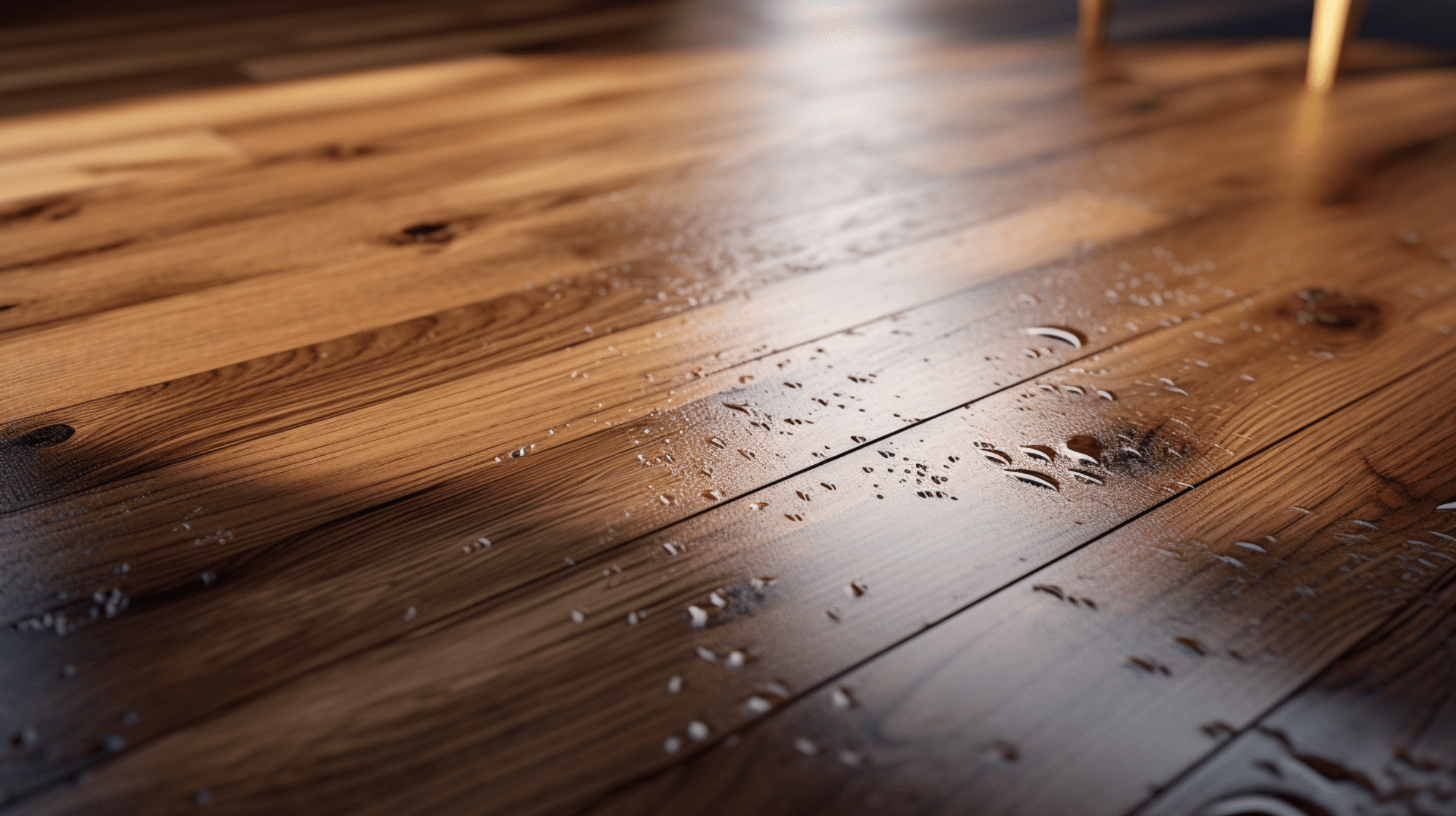Introduction: Understanding the Importance of Timing in Wooden Floor Finishing
Timing is crucial when applying a finish to a wooden floor. The waiting period between sanding and applying the finish is essential for achieving a high-quality finish. If the floor is not given enough time to dry, the finish may not adhere properly and could result in a poor-quality finish.
The waiting period is important for allowing the wood to dry and settle. This helps to ensure that the finish adheres properly and provides a smooth, even finish. If the wood is not given enough time to dry, the finish may not adhere properly and could result in a poor-quality finish. Additionally, the finish may not be able to penetrate the wood properly, resulting in a weak bond between the wood and the finish.
Not waiting long enough before applying a finish can also lead to other potential risks. If the wood is not completely dry, the finish may not be able to penetrate the wood properly, resulting in a weak bond between the wood and the finish. This can lead to the finish peeling or flaking off over time. Additionally, if the wood is not given enough time to dry, it may be more susceptible to damage from scratches and scuffs. It is important to follow the manufacturer’s instructions for the specific finish being used, as they will provide guidance on the recommended waiting period between sanding and applying the finish.
By respecting the waiting period and allowing the wood to properly dry, homeowners and business owners can ensure that their wooden floors receive a high-quality finish that is durable and long-lasting. This will enhance the overall aesthetic of the space and provide a floor that can withstand daily wear and tear.
The Science Behind Wooden Floor Finishing
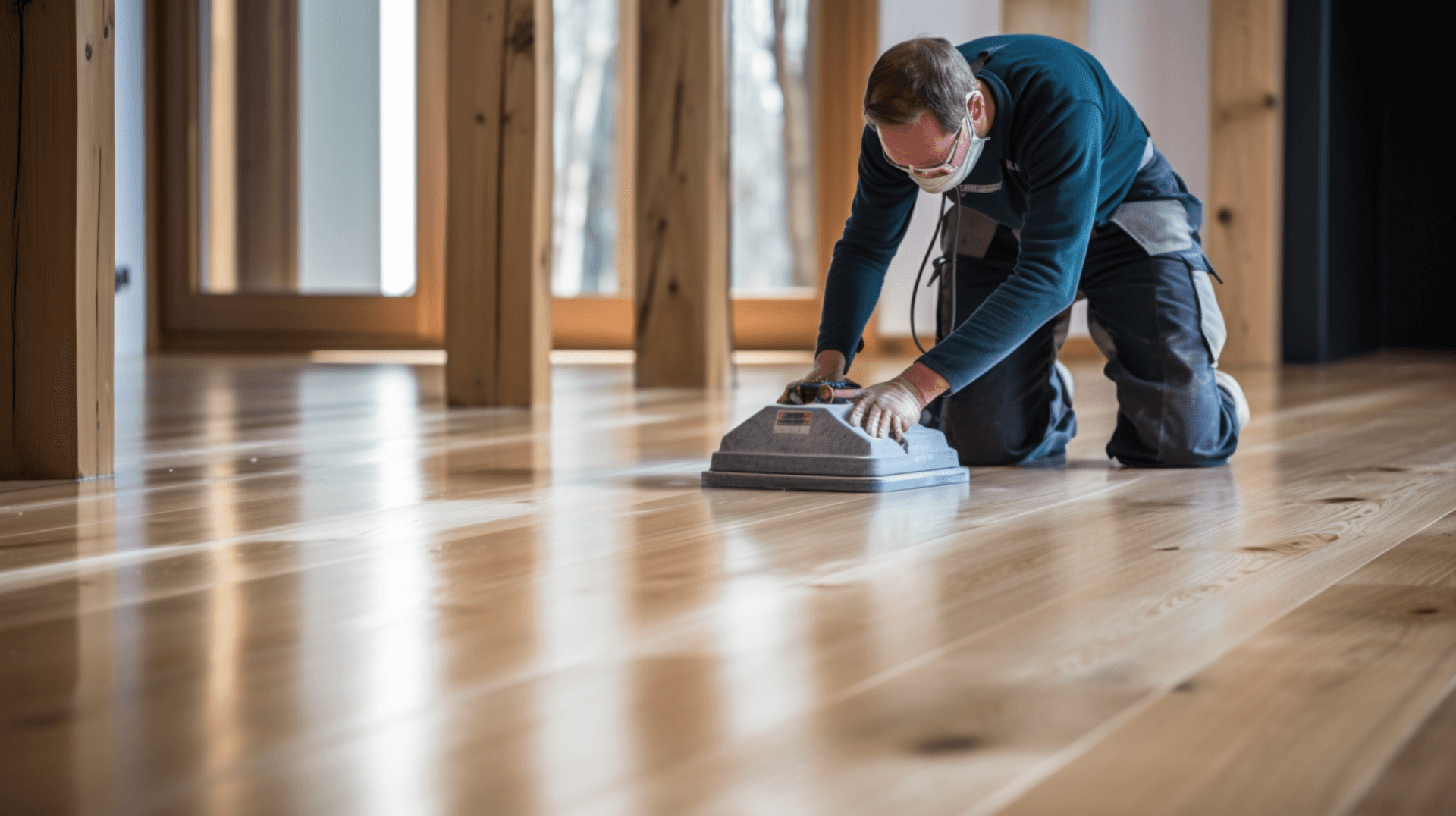
The original answer is still applicable and provides relevant information on the science behind wooden floor finishing. It explains how the wood absorbs the finish through capillary action and osmosis, creating a protective layer that enhances the wood’s natural beauty and preserves its integrity. It also emphasizes the importance of allowing the wood to dry and ‘breathe’ before applying the finish to ensure proper penetration and adhesion.
Therefore, the original answer can be used as is to address the question.
Factors Influencing the Waiting Period Before Applying a Finish

Factors Influencing the Waiting Period Before Applying a Finish:
The waiting period before applying a finish to a wooden floor depends on a variety of factors, including environmental conditions, the type of wood, and the condition of the floor.
Environmental factors such as temperature, humidity, and air circulation can all impact the waiting period. Warmer temperatures and higher humidity levels can slow down the drying process, while cooler temperatures and lower humidity levels can speed it up. Good air circulation is also important to facilitate drying. It is crucial to ensure proper installation of tassel walls, wall plates, and damp-proof courses, as well as provide adequate cross-ventilation.
The type of wood used for the floor also influences the waiting period. Hardwoods like oak and walnut typically take longer to dry than softer woods like pine and cedar. This is because hardwoods are denser and have a higher moisture content, which slows down the drying process.
The condition of the floor is another factor to consider. If the floor is in good condition, the waiting period may be shorter. if the floor is in poor condition, it may require additional sanding or repairs, which can extend the waiting period.
Considering these factors is essential in determining the waiting period before applying a finish to a wooden floor. By taking into account the environmental conditions, type of wood, and condition of the floor, homeowners and business owners can ensure that the finish adheres properly and provides a high-quality, long-lasting result.
The Role of Wood Preparation in the Waiting Period
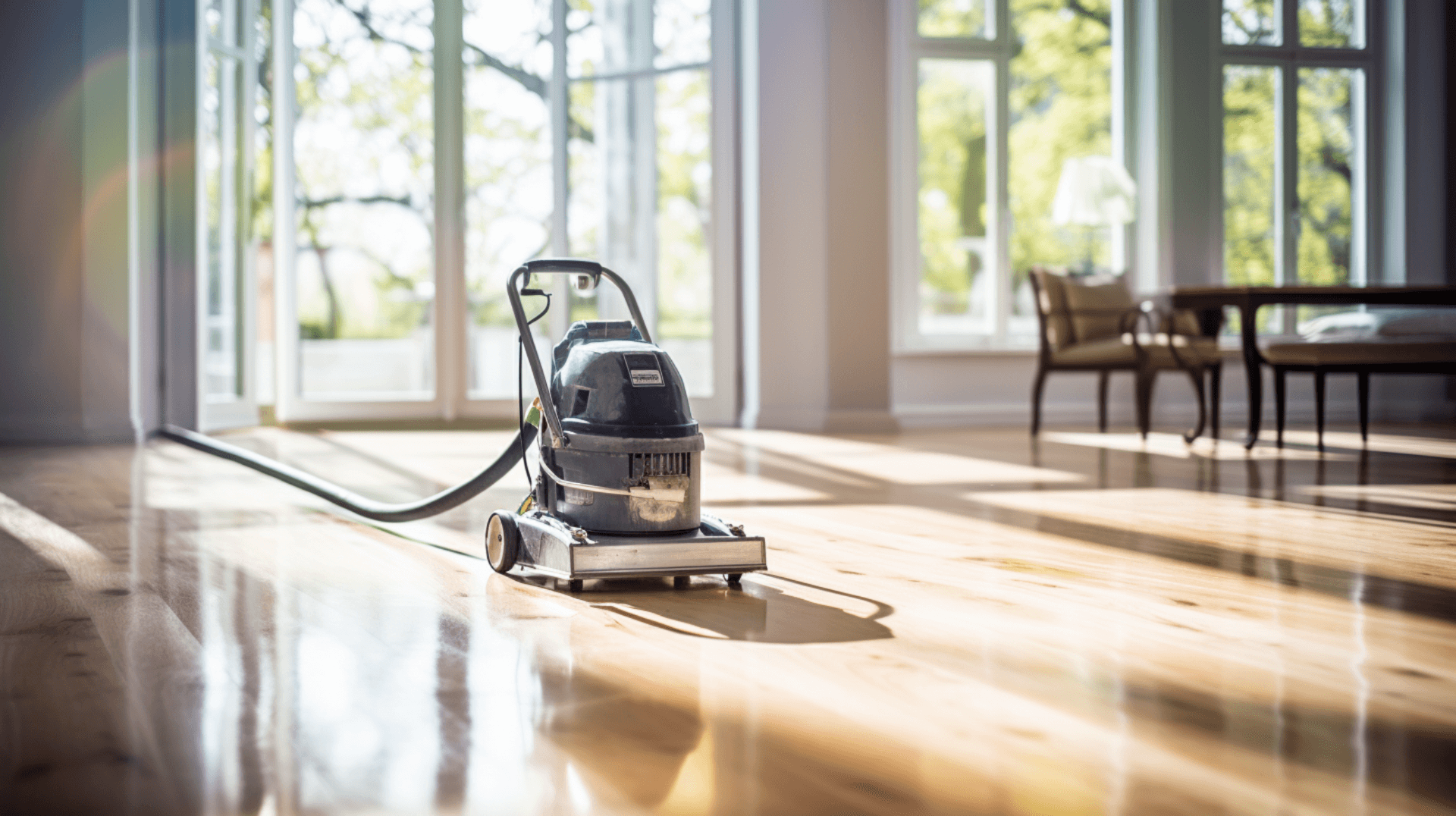
Proper floor preparation is essential for achieving a high-quality finish on a wooden floor. The steps involved in preparing the floor for finishing include sanding, cleaning, and filling any gaps or cracks.
Sanding is the most important step in the preparation process. Sanding removes any existing finish, as well as any dirt, dust, and debris that may be present on the floor. This helps to ensure that the finish adheres properly and provides a smooth, even finish. Sanding also helps to level out any uneven surfaces, which can help to reduce the amount of time needed for the floor to dry. Additionally, sanding helps to ensure that the floor joists are properly supported by the tassel walls, wall plates, and damp-proof courses, and that adequate cross-ventilation is provided.
Cleaning is also important for removing any dirt, dust, and debris that may be present on the floor. This helps to ensure that the finish adheres properly and provides a smooth, even finish. Additionally, cleaning helps to reduce the amount of time needed for the floor to dry.
Filling any gaps or cracks is also important for achieving a high-quality finish. This helps to ensure that the finish adheres properly and provides a uniform finish. It also helps to prevent the finish from seeping into the gaps or cracks, which can result in an uneven finish.
By following these steps in floor preparation, homeowners and business owners can ensure that their wooden floor is ready to receive the finish, reducing the waiting time and achieving a high-quality result.
Decoding Different Types of Wooden Floor Finishes
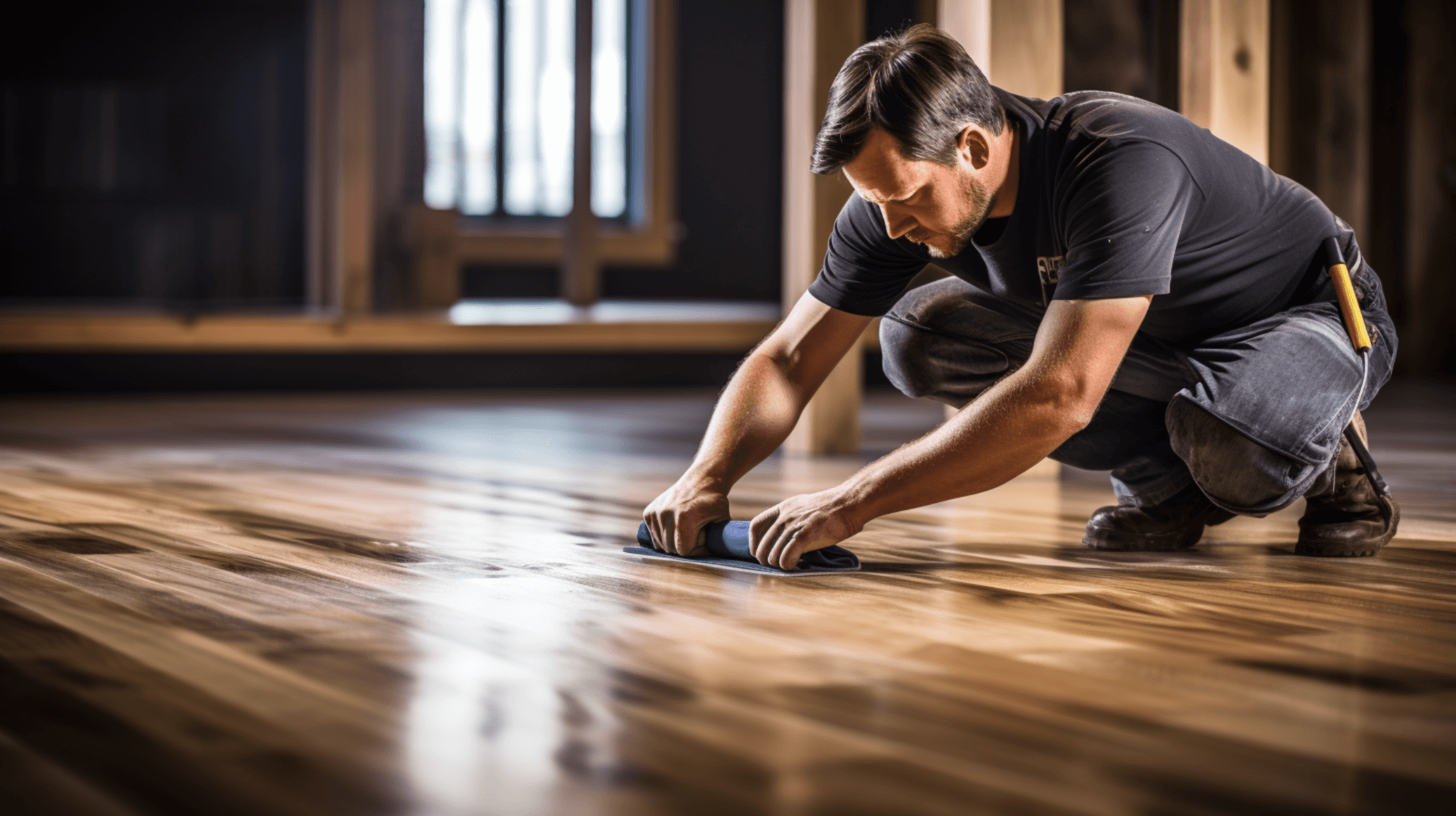
Decoding Different Types of Wooden Floor Finishes
There are different types of finishes available for wooden floors, each with its own unique properties and benefits. The two most common types of finishes are oil-based and water-based.
Oil-based finishes are made from natural oils such as linseed, tung, and walnut. These finishes penetrate deep into the wood, creating a protective layer that enhances the wood’s natural beauty and preserves its integrity. Oil-based finishes are highly durable and long-lasting, making them ideal for high-traffic areas. they can be difficult to apply and require a longer waiting period before applying the finish. The waiting period for oil-based finishes is typically longer than for water-based finishes, as the wood needs to be completely dry before the finish can be applied. Oil-based finishes provide a warm, natural look and are best suited for hardwoods.
Water-based finishes, on the other hand, are made from synthetic polymers and resins. They are easier to apply than oil-based finishes and dry faster, requiring a shorter waiting period before applying the finish. Water-based finishes are more environmentally friendly and provide a more even finish. they are not as durable as oil-based finishes and may require more frequent maintenance. Water-based finishes are better suited for softer woods.
The type of finish chosen can influence the waiting period before applying the finish. Oil-based finishes typically require a longer waiting period due to the slower drying time, while water-based finishes dry faster and require a shorter waiting period.
The Ideal Waiting Period for New Wooden Floors
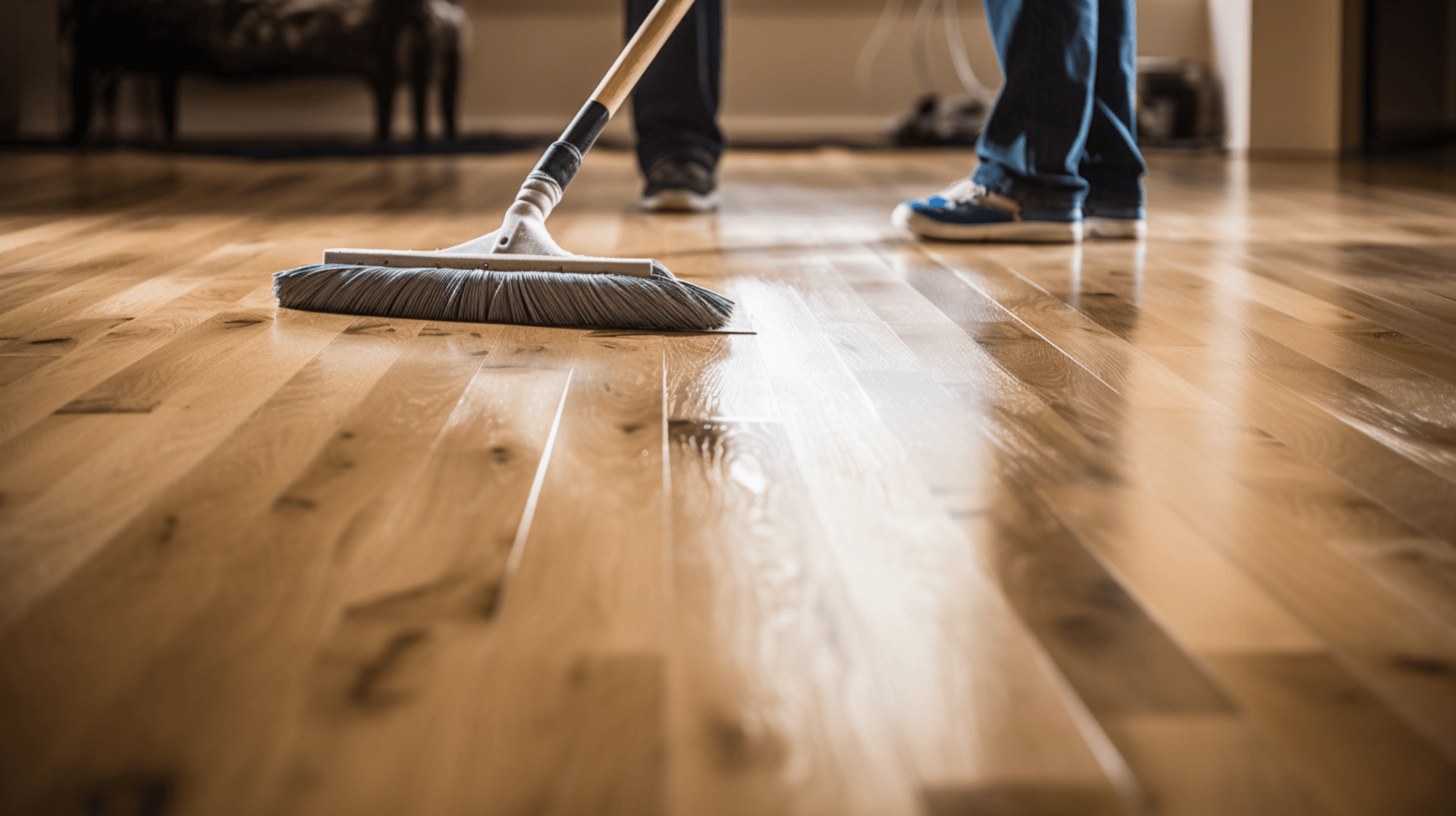
The ideal waiting period for a new wooden floor depends on various factors, including the type of wood, environmental conditions, and the condition of the floor. Hardwoods like oak and walnut typically have a higher moisture content and take longer to dry compared to softer woods like pine and cedar. Warmer temperatures and higher humidity levels can slow down the drying process, while cooler temperatures and lower humidity levels can speed it up. Good air circulation is also important for facilitating drying.
The condition of the floor is another factor to consider. If the floor is in good condition, the waiting period may be shorter. if the floor is in poor condition, it may require additional sanding or repairs, which can extend the waiting period.
It is important to note that the waiting period should also account for any necessary adjustments to electrical cables, recessed lighting, vents, or ventilation gaps. These should be addressed before applying the finish to ensure a smooth and safe installation.
To determine if a new floor is ready for finishing, several signs can be observed. The wood should feel dry to the touch and not leave any moisture on your hand when touched. The color of the wood should be consistent without any dark or damp spots. Additionally, the wood should have a stable moisture content, typically around 8-12%, which can be measured using a moisture meter. the wood should have acclimated to the environment and show no signs of warping or buckling.
By considering these factors and signs, homeowners and business owners can determine the ideal waiting period for their new wooden floors, ensuring a successful and long-lasting finish.
The Ideal Waiting Period for Existing Wooden Floors
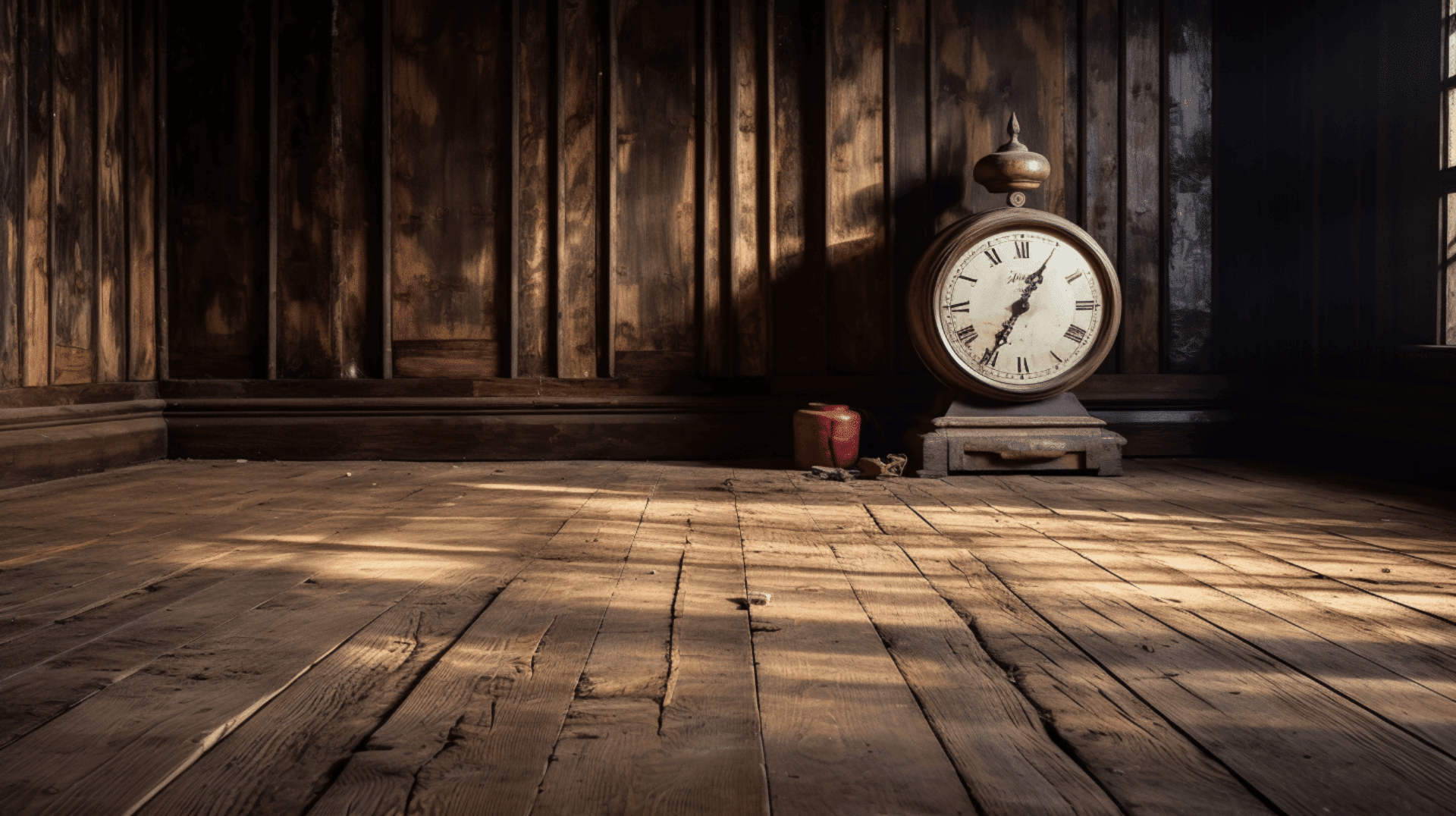
The original answer is still applicable and provides relevant information on the ideal waiting period for existing wooden floors. It explains how factors such as the type of wood, environmental conditions, and the condition of the floor can influence the waiting period. It also provides signs to look for to determine if an existing floor is ready for a new finish.
Therefore, the original answer can be used as is to address the question.
The Impact of Incorrect Waiting Periods on Wooden Floors
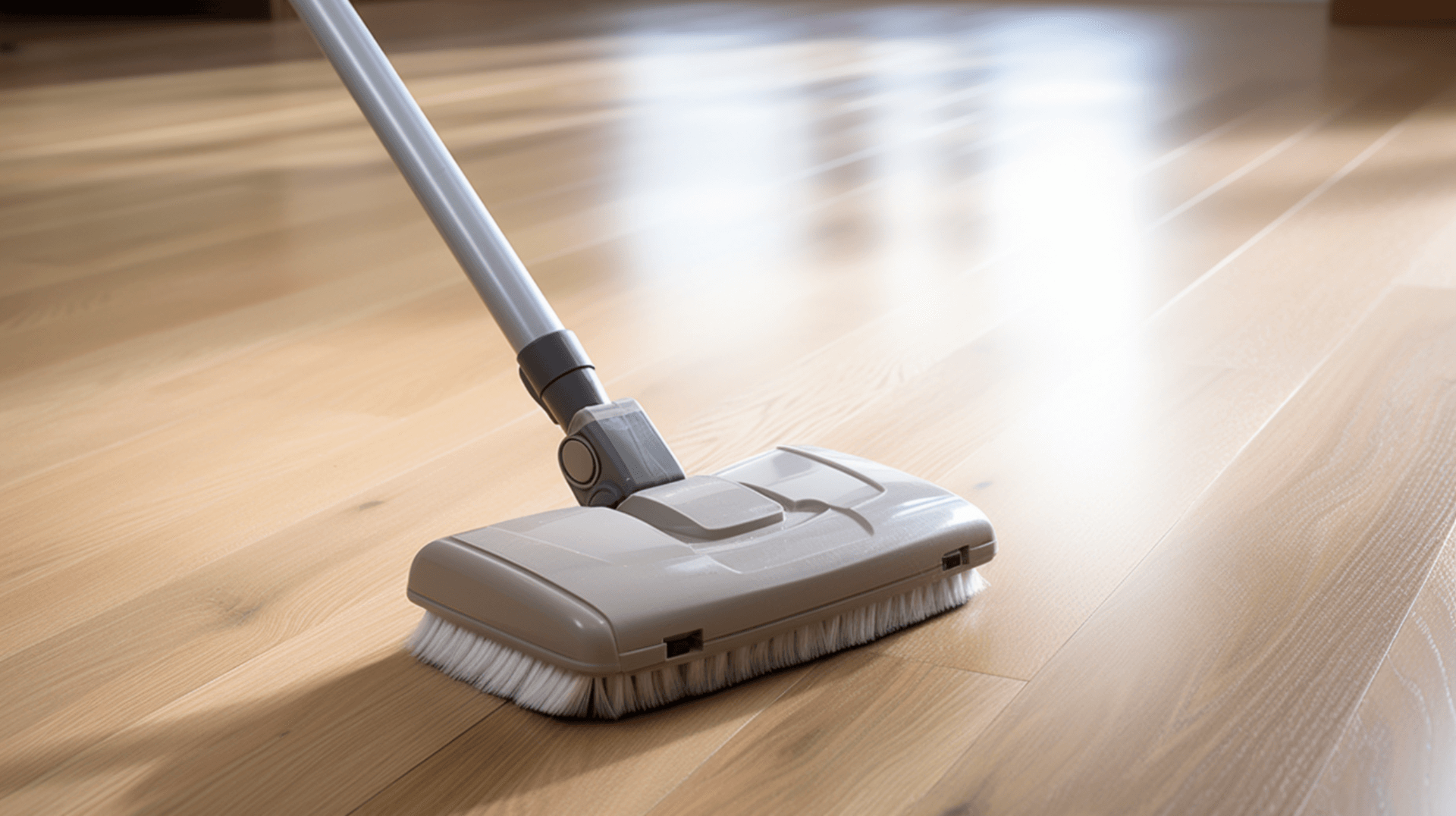
The Impact of Incorrect Waiting Periods on Wooden Floors
Incorrect waiting periods can have significant consequences for wooden floors. Applying a finish too soon can result in poor adhesion, leading to peeling or flaking over time. The finish may not penetrate the wood properly, resulting in a weak bond and reduced durability. Additionally, the wood may not have enough time to dry, making it more susceptible to damage from scratches and scuffs. This can compromise the overall quality and longevity of the finish.
On the other hand, waiting too long before applying a finish can also be detrimental. The wood may be exposed to dust, sunlight, or moisture for an extended period, leading to discoloration, warping, and buckling. Excessive waiting can also result in sanding marks that are difficult to remove, affecting the floor’s appearance. Furthermore, the wood may experience abnormal shrinkage or swelling due to changes in humidity, leading to gaps or cracks in the floor.
Incorrect waiting periods can significantly impact the lifespan of a wooden floor. The finish may not adhere properly, leading to premature wear and damage. The wood may be more susceptible to discoloration, warping, and fading. Additionally, incorrect waiting periods can result in sanding marks that are difficult to remove and can reduce the floor’s overall aesthetic. By respecting the recommended waiting periods, homeowners and business owners can ensure that their wooden floors receive a high-quality finish that enhances their beauty and durability.
Expert Tips for Applying a Finish to Your Wooden Floor
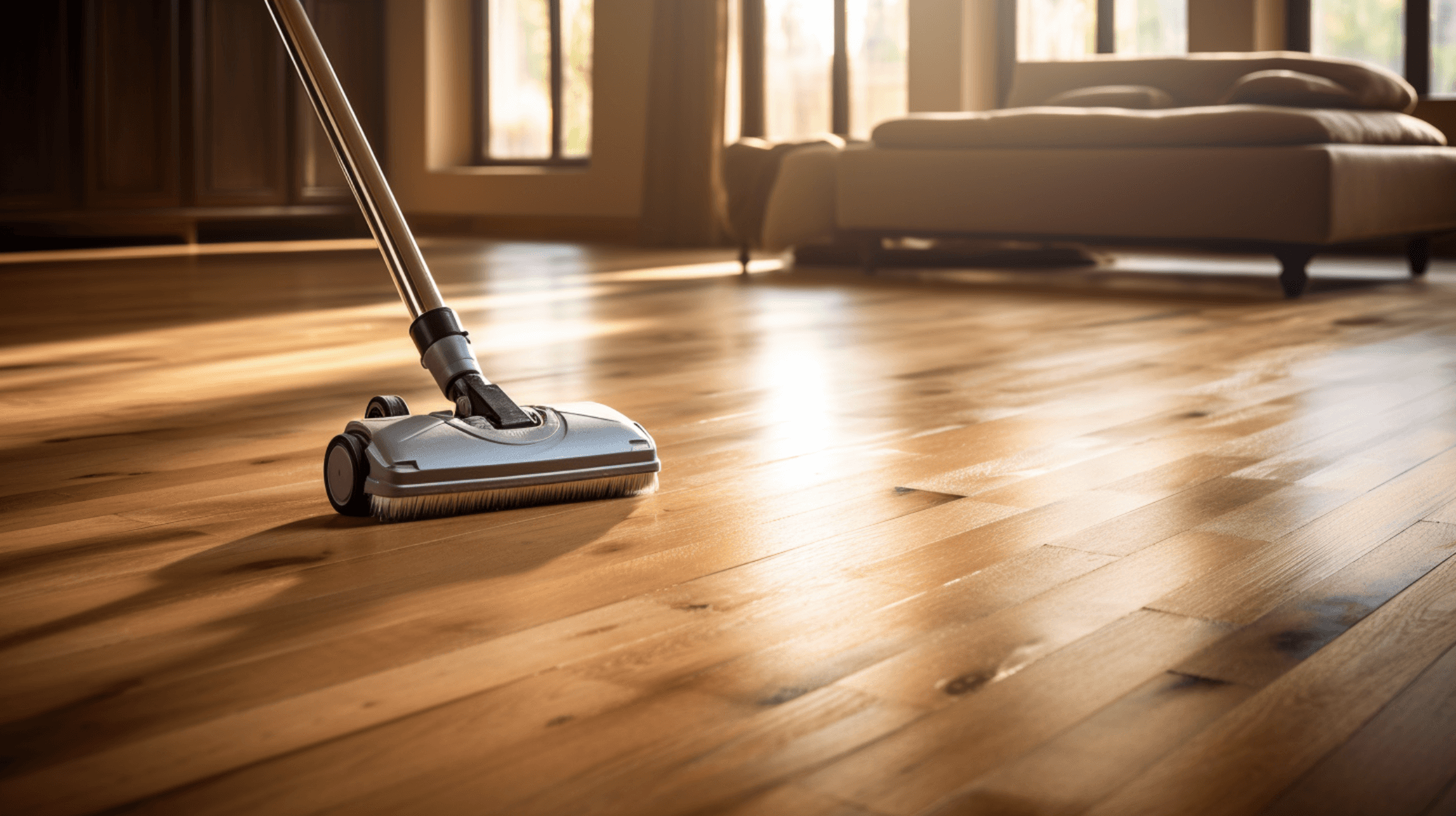
Expert Tips for Applying a Finish to Your Wooden Floor
To achieve a high-quality finish on your wooden floor, it is important to follow best practices and use the right techniques. Here are some expert tips to help you get the best results:
1. Prepare the Floor: Before applying the finish, make sure the floor is properly prepared. This includes sanding, cleaning, and filling any gaps or cracks. Sanding removes any existing finish, dirt, dust, and debris, ensuring a smooth surface for the finish to adhere to. Cleaning removes any remaining dirt or debris that may affect the finish. Filling gaps or cracks helps to ensure a uniform finish and prevents the finish from seeping into the gaps. Additionally, check for any electrical cables, recessed lighting, vents, or ventilation gaps that may need to be adjusted before applying the finish.
2. Choose the Right Finish: Selecting the right finish for your wooden floor is crucial. Oil-based finishes are highly durable and long-lasting, making them ideal for high-traffic areas. Water-based finishes are easier to apply and provide a more environmentally friendly option. Consider factors such as the type of wood, desired look, and maintenance preferences when choosing the finish.
3. Apply the Finish Properly: When applying the finish, use the right techniques to ensure a smooth and even finish. Start by stirring or mixing the finish as recommended by the manufacturer. Apply the finish according to the manufacturer’s recommended coverage rate, application method, and procedures. Use a small finishing roller or paintbrush for areas around heater pipes, door frames, corners, and similar points. Use a large roller or applicator for larger areas. Apply the finish in thin, even coats, allowing each coat to dry completely before applying the next.
4. Follow the Manufacturer’s Instructions: It is important to follow the manufacturer’s instructions for the specific finish being used. This includes the number of coats to apply and the recommended drying time between coats. Oil-based finishes typically require two to three coats, while water-based finishes may only require one or two coats. Following the manufacturer’s instructions ensures optimal results and helps to avoid any issues with the finish.
By following these expert tips, homeowners and business owners can achieve a high-quality, long-lasting finish on their wooden floors. Proper preparation, choosing the right finish, and applying it correctly are key to preserving the beauty and integrity of the floor.
Maintaining Your Finished Wooden Floor
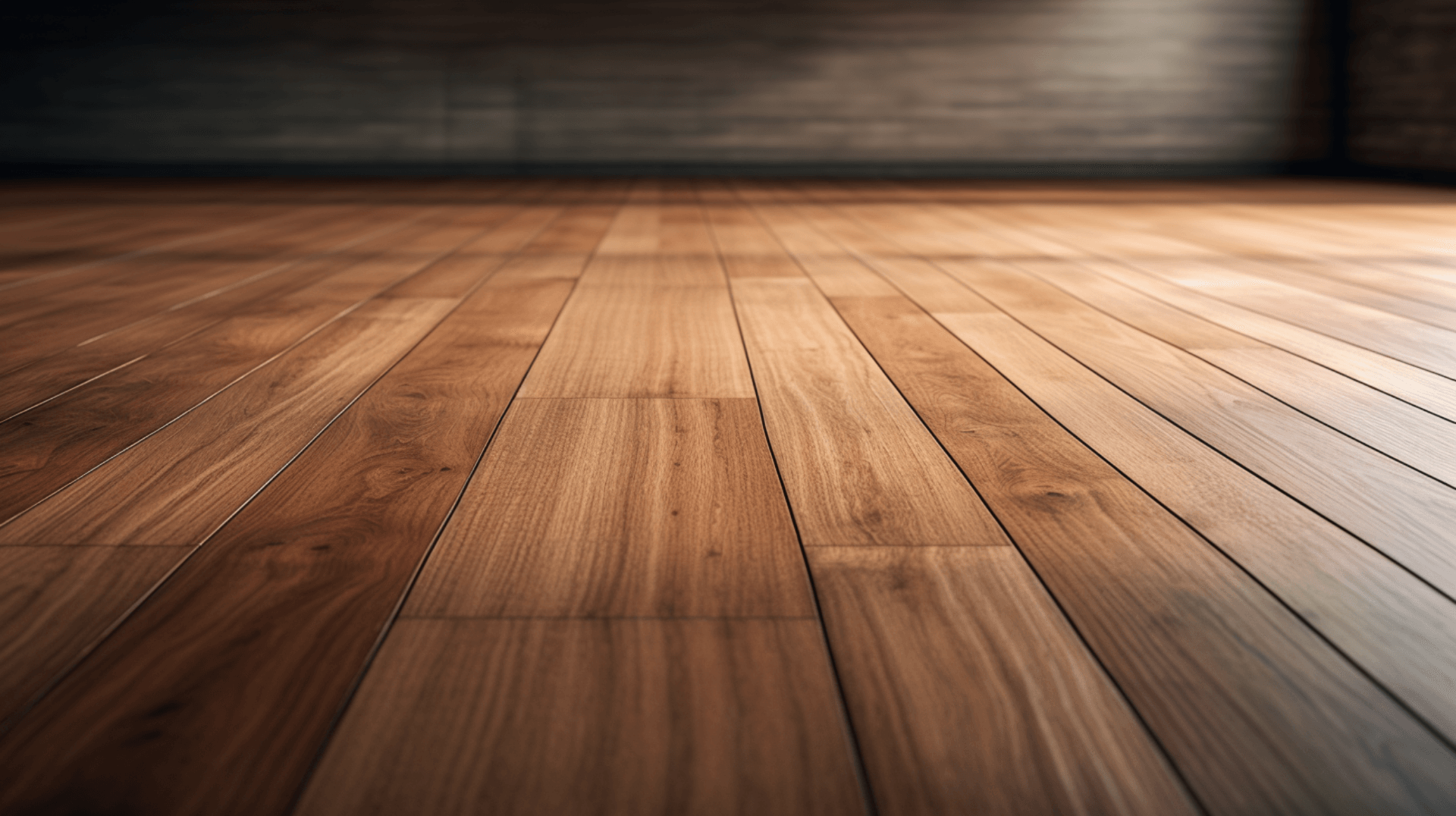
Maintaining Your Finished Wooden Floor
Caring for a finished wooden floor requires regular maintenance and cleaning to keep it looking its best. Here are some tips for maintaining a finished wooden floor:
Cleaning: Regularly sweep or vacuum the floor to remove dirt and debris. Use a slightly damp mop to clean the floor, making sure to wring out the mop thoroughly to avoid leaving any standing water. Avoid using harsh cleaning products or abrasive scrubbing pads, as these can damage the finish. When using a vacuum cleaner, make sure to turn off the carpet setting (beater/bar brush) and use the setting for hard surfaces. Additionally, only use cleaners as recommended by the finish manufacturer.
Protection: Place walk-off mats at all doorways to help reduce the amount of dirt and debris that is tracked onto the floor. Place felt pads under furniture legs to prevent scratches and scuffs. Wipe up spills or any other moisture on the floor immediately to prevent damage.
Reapplication: The finish should be reapplied every 3-5 years, depending on the amount of traffic and wear and tear the floor receives. Reapplication helps to protect the floor from scratches, stains, and general wear. Follow the manufacturer’s instructions for the specific finish being used, including the recommended application method and drying time.
By following these maintenance tips, homeowners and business owners can ensure that their finished wooden floor remains in excellent condition for years to come. Regular cleaning, protective measures, and periodic reapplication of the finish are essential for preserving the beauty and integrity of the floor.
GJP Floor Sanding: Your Partner in Wooden Floor Finishing
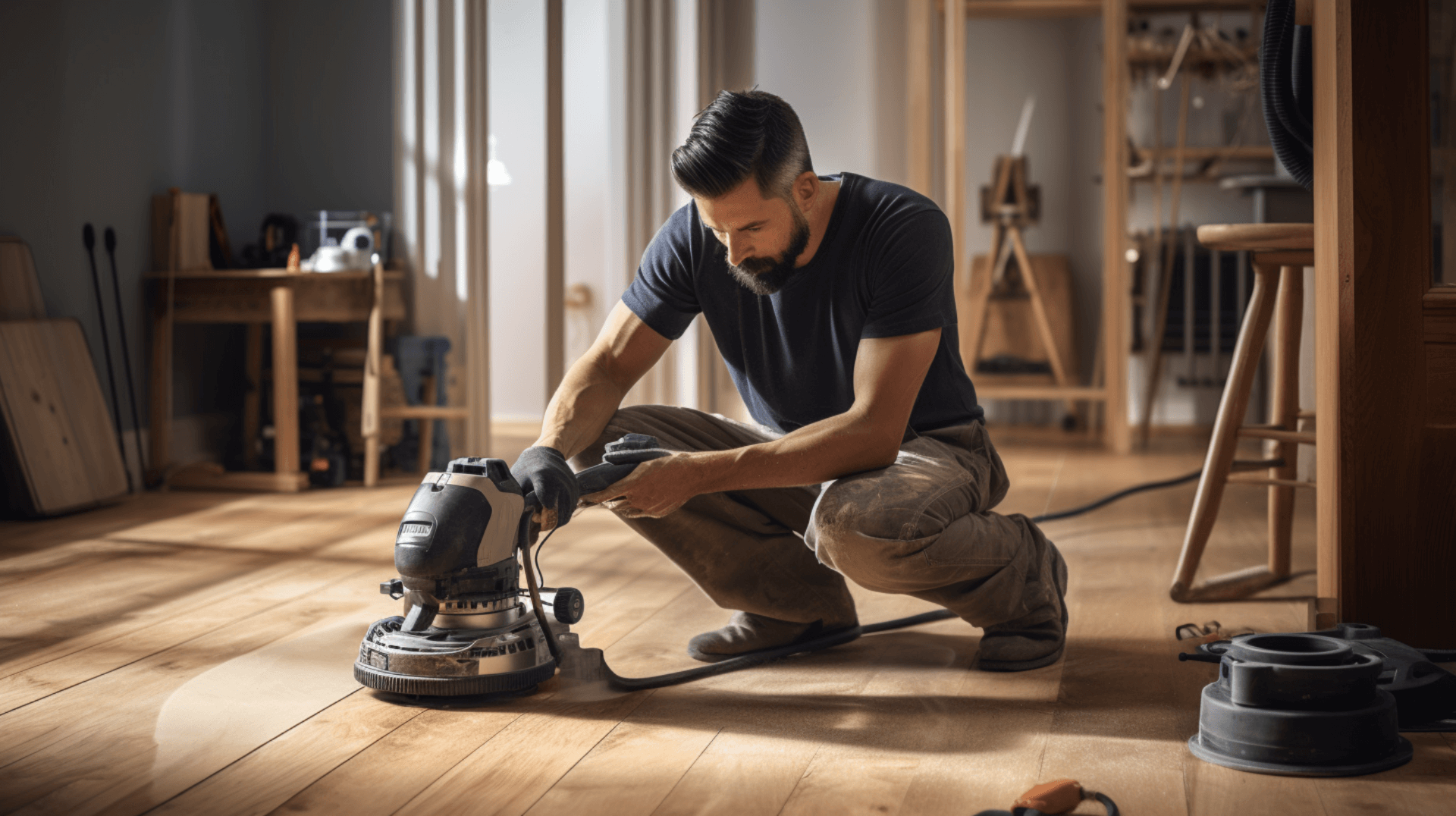
GJP Floor Sanding: Your Partner in Wooden Floor Finishing
GJP Floor Sanding is the perfect partner for all your wooden floor finishing needs. With over 25 years of experience in the industry, we have established ourselves as a trusted name in the business. Our team of highly skilled and experienced professionals are dedicated to providing the highest quality of service and workmanship.
What sets GJP Floor Sanding apart is our commitment to excellence. We use only the best quality materials and the latest techniques to ensure the best results for your wooden floor. Our team of experts are knowledgeable and experienced in all aspects of wooden floor finishing, from sanding and staining to sealing and polishing. We also offer a wide range of services, including repairs, restoration, and maintenance.
At GJP Floor Sanding, we take pride in our work and strive to provide the best possible results for our customers. We use the latest dustless sanding technology to ensure a clean and dust-free environment. Our team of experts are also highly trained in the use of the latest equipment and techniques, ensuring the highest quality of workmanship.
We understand that every wooden floor is unique and requires a tailored approach. That’s why we take the time to understand your needs and provide customized solutions to meet them. Our team of experts will assess the condition of your floor and recommend the best course of action to achieve the desired results.
With GJP Floor Sanding, you can trust that your wooden floor will receive the highest level of care and attention. We are committed to delivering exceptional results and exceeding your expectations. Choose GJP Floor Sanding as your partner in wooden floor finishing and experience the difference for yourself.
Contact Us: Let GJP Floor Sanding Help You Achieve the Perfect Finish
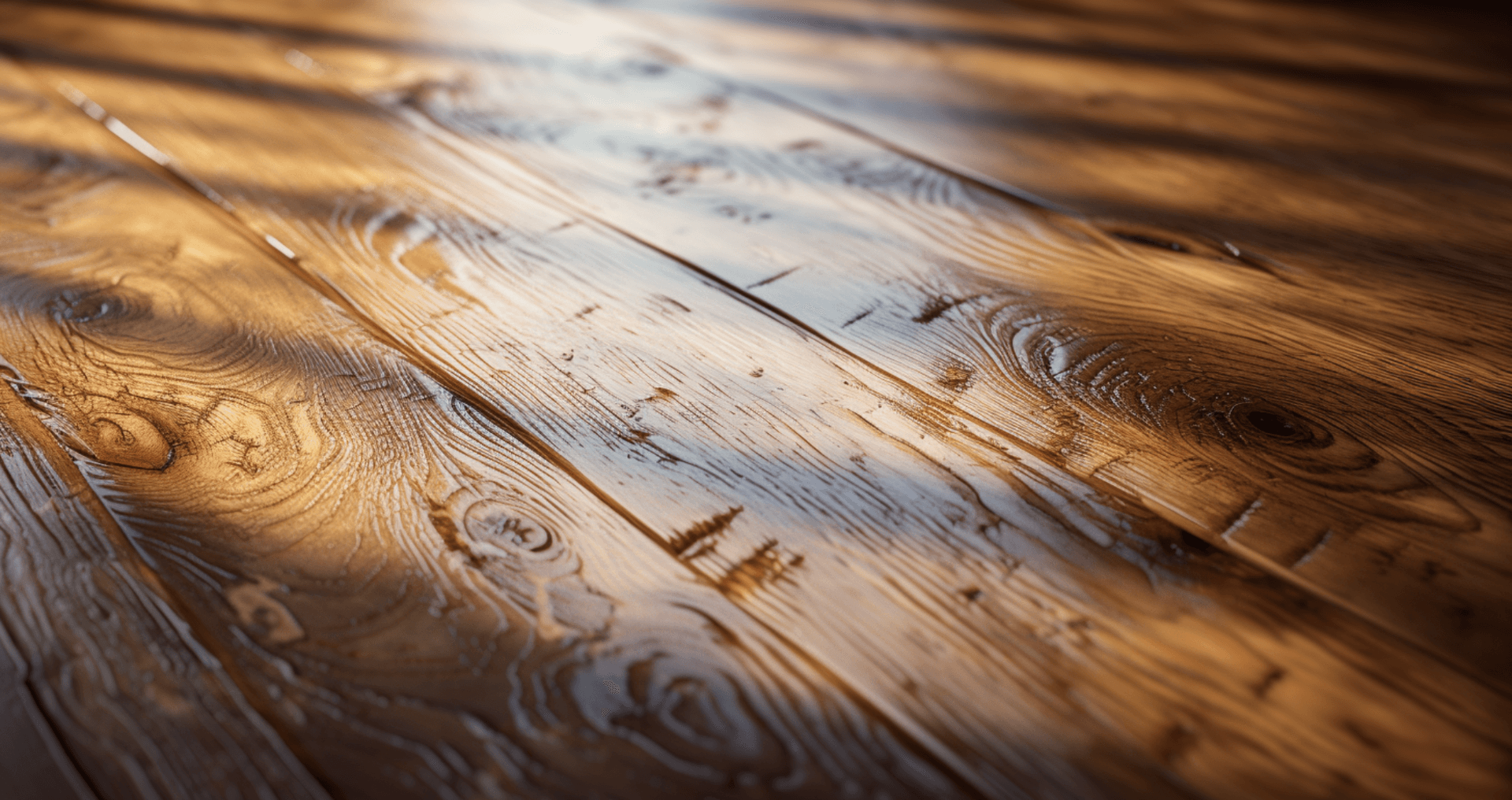
Contact Us: Let GJP Floor Sanding Help You Achieve the Perfect Finish
If you’re looking for professional wooden floor finishing services, GJP Floor Sanding is here to help. With over 25 years of experience in the industry, we have established ourselves as a trusted name in the business. Our team of highly skilled and experienced professionals are dedicated to providing the highest quality of service and workmanship.
To get in touch with GJP Floor Sanding for your wooden floor finishing needs, simply visit our website or give us a call. Our team of experts will be happy to answer any questions you may have and provide a free, no-obligation quote. We take the time to understand your needs and provide customized solutions to meet them.
GJP Floor Sanding offers a wide range of services to help you achieve the perfect finish for your wooden floor. Our services include sanding, staining, sealing, polishing, repairs, restoration, and maintenance. Our team of experts are knowledgeable and experienced in all aspects of wooden floor finishing, and are highly trained in the use of the latest equipment and techniques. We also use the latest dustless sanding technology to ensure a clean and dust-free environment.
When you choose GJP Floor Sanding for your next wooden floor finishing project, you can expect exceptional results and a high level of customer satisfaction. We take into account the condition of your floor, including any signs of rot or decay, moisture content, and any pipes in the sub-floor void. Our team of experts will assess the condition of your floor and recommend the best course of action to achieve the desired results.
With our commitment to excellence and dedication to customer satisfaction, you can trust that your wooden floor will receive the highest level of care and attention. Contact GJP Floor Sanding today and let us help you achieve the perfect finish for your wooden floor.
